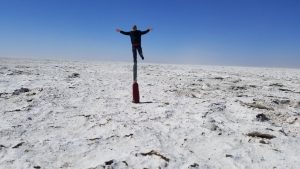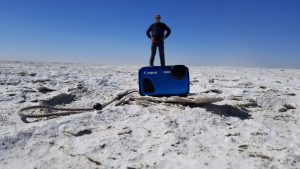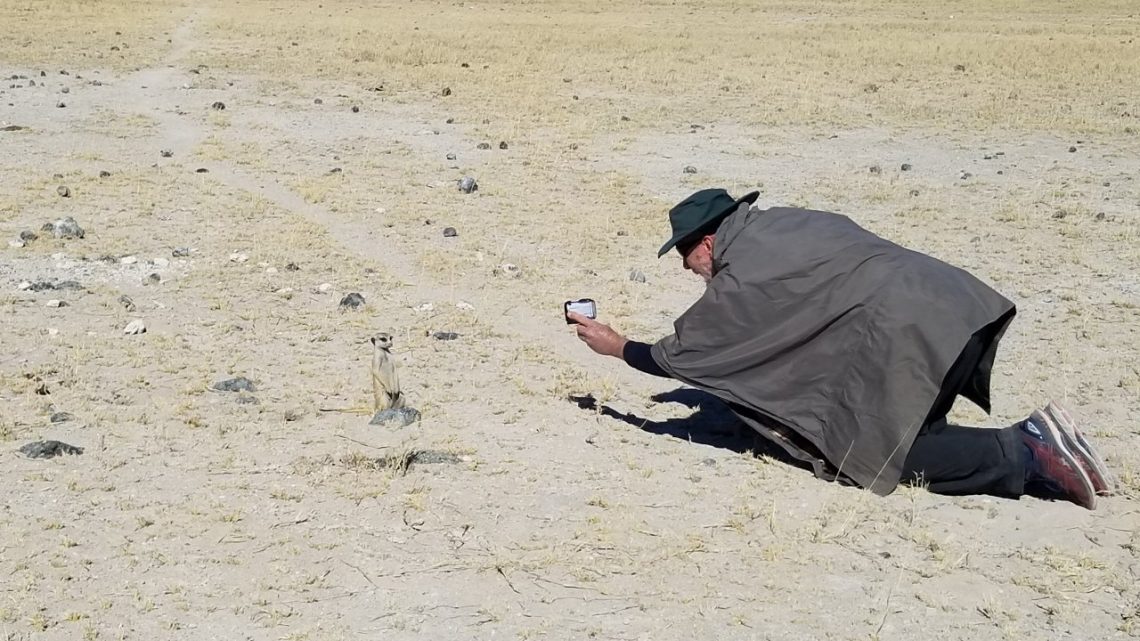September 1, 2019 5:51 a.m.
Weather: Clear Temp:17C
Meercat Safari
The trip out to see the meercats was 40kms long and took 2 hours bumping across the semi desert on informal roads. The temperature was 17C but felt even colder with the windchill. Everyone huddled under blankets. We stopped to watch the sunrise beside a baobab tree before continuing on our way. On the way out we saw an elephant, several steinboks, Africa’s smallest antelopes, ostriches and lots of cows, horses and donkeys.
There is a meercat guide who lives with the meercats. His job is to follow the family and get them used to having humans around. There are 15 individuals in this family and one of them is pregnant. Meercats are insectavores but will also eat frogs, lizards and occasionally mice. They get there moisture from their food and do not need to drink water. They live in ground tunnels and forage during the day. They can cover up to 2kms across the desert in search of food. Their main predators are hawks and other raptors.We had breakfast on the desert consisting of coffee, hard-boiled eggs, cereal, muffins and yogurt.
After leaving the meercats we ventured out onto the salt flats, the remanent of a vast lake that has long since dried up as rivers changed their courses and deprived the lake of its water. Bill and I had fun with optical illusions.
 On our way home our driver, Kemi, managed to find Rory’s smartphone that had dropped out of his pocket on our way out in the morning. We got.
On our way home our driver, Kemi, managed to find Rory’s smartphone that had dropped out of his pocket on our way out in the morning. We got.
back to the lodge in time to shower off the thick dust and get ourselves presentable for lunch.
Tour Cost:Included
Daily cost:330 P for drinks over 2 days
Entry located at: https://www.google.com/maps/@-20.1893387,25.3057433,100m/data=!3m1!1e3Shared via Flexible Journal

